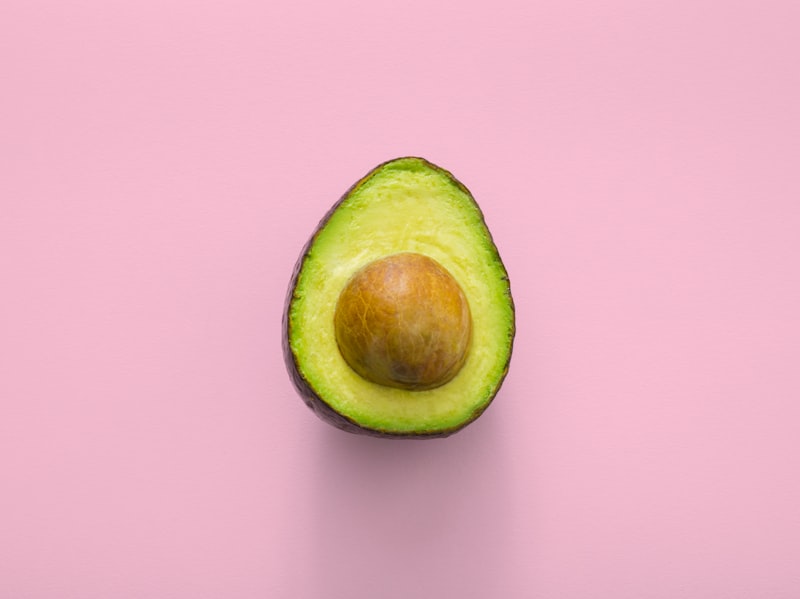What are Gluten-Free Foods ?
Gluten-free foods have become increasingly popular in recent years, but what exactly does “gluten-free” mean? Gluten refers to a group of proteins found in wheat, barley, and rye. For some people, consuming gluten can cause adverse health effects, particularly those with celiac disease or gluten sensitivity.
Imagine gluten as the “glue” that holds together many baked goods and processed foods. It gives elasticity to dough and helps foods maintain their shape. However, for individuals who cannot tolerate gluten, even small amounts can trigger uncomfortable symptoms like bloating, diarrhea, and fatigue.
So, what are gluten-free foods then? Simply put, these are foods that do not contain gluten. This includes naturally gluten-free grains like rice, corn, quinoa, and oats (when labeled gluten-free). Additionally, many fruits, vegetables, meats, fish, dairy products, and legumes are naturally free from gluten.
In recent years, the market for gluten-free products has expanded dramatically. You can now find gluten-free versions of almost any food imaginable, from pasta and bread to cookies and beer. These products use alternative flours and ingredients like almond flour, coconut flour, tapioca starch, and potato starch to mimic the texture and taste of gluten-containing foods.
People choose to eat gluten-free for various reasons. For those with celiac disease, it’s a necessity to avoid gluten completely to prevent intestinal damage and other health complications. Others may adopt a gluten-free diet to alleviate symptoms of gluten sensitivity or because they believe it helps with digestive issues or overall well-being.
Gluten-free foods cater to individuals who need to avoid gluten due to medical reasons or personal choice. Whether you’re seeking relief from digestive discomfort or simply exploring new dietary options, understanding what gluten-free entails can empower you to make informed food choices that support your health and lifestyle goals.
Unveiling the Basics: What Exactly Qualifies as Gluten-Free Food?
So, what exactly qualifies as gluten-free? Essentially, it’s any food that doesn’t contain gluten or has gluten in amounts less than 20 parts per million (ppm). This tiny threshold is crucial as even trace amounts of gluten can provoke symptoms in sensitive individuals.
Navigating the aisles of your local grocery store, you’ll find an increasing array of products labeled “gluten-free.” These can range from naturally gluten-free items like fruits, vegetables, and dairy products to specially formulated gluten-free bread, pasta, and snacks. The key here is that manufacturers adhere to strict guidelines to ensure their products meet the gluten-free standard.
But why all the fuss over gluten? Imagine gluten as a sticky adhesive that holds food together. For someone with celiac disease, consuming gluten sets off an immune response that damages the small intestine’s lining. This can lead to malabsorption of nutrients, digestive discomfort, and long-term health issues if not managed properly.
Interestingly, going gluten-free has also gained traction beyond medical necessity. Some people report feeling more energetic or experiencing fewer digestive issues when they cut out gluten. Whether it’s a trend or a medical requirement, the demand for gluten-free options has prompted food producers to innovate and expand their offerings.
In restaurants, the term “gluten-free” on a menu signifies dishes prepared without gluten-containing ingredients and with measures to prevent cross-contamination. It’s a reassurance for diners that they can enjoy their meal without compromising their health.

Navigating Gluten-Free: A Comprehensive Guide to Safe Eating
Gluten-free diets have gained immense popularity in recent years, whether due to celiac disease, gluten sensitivity, or personal health choices. Understanding the nuances of gluten-free eating can be daunting yet crucial for maintaining a healthy lifestyle. Here’s a comprehensive guide to help you navigate the world of gluten-free eating.
Firstly, what exactly is gluten? Gluten is a protein found in wheat, barley, and rye. For individuals with celiac disease, consuming gluten triggers an immune response that damages the small intestine lining. Even those without celiac disease may experience discomfort or other health issues from gluten sensitivity.
When adopting a gluten-free diet, the primary goal is to avoid all sources of gluten. This includes obvious foods like bread, pasta, and baked goods made with wheat flour. However, gluten can also hide in unexpected places such as sauces, soups, and even some medications. Reading labels meticulously and opting for certified gluten-free products is essential.
Fortunately, many naturally gluten-free foods exist, ensuring a balanced and nutritious diet. Fresh fruits and vegetables, lean proteins like poultry and fish, dairy products, and gluten-free grains such as quinoa and rice are all safe choices. Experimenting with gluten-free alternatives like almond flour for baking or using gluten-free oats can add variety to your meals.
Eating out can pose challenges, but awareness and communication are key. Choose restaurants that offer gluten-free menus or are knowledgeable about safe food preparation practices. When in doubt, don’t hesitate to ask questions about ingredients and cross-contamination risks.
Ultimately, navigating a gluten-free diet requires patience and education. By embracing a variety of naturally gluten-free foods and staying vigilant about hidden sources of gluten, you can enjoy a fulfilling and healthy gluten-free lifestyle. Discovering new recipes and adapting favorite dishes to gluten-free versions can turn dietary restrictions into an opportunity for culinary exploration.
Demystifying Gluten-Free Diets: Everything You Need to Know
Gluten, found in wheat, barley, and rye, can be a pesky protein for some. Those with celiac disease, an autoimmune disorder, must avoid it at all costs to steer clear of digestive havoc and other serious health issues. But it’s not just for celiacs—many folks opt for gluten-free diets to alleviate digestive discomfort or boost overall well-being.
But hold up—what exactly is gluten? Picture it as the glue holding dough together, giving bread its chewy texture and pastries their delightful fluff. For gluten-sensitive individuals, consuming it can lead to inflammation, bloating, or worse, making gluten-free alternatives a life-changing choice.
Navigating gluten-free options doesn’t mean bidding farewell to taste. Thanks to a booming market, you’ll find an array of delicious alternatives from gluten-free pastas that don’t go mushy to heavenly moist cakes sans wheat flour. It’s a gluten-free gastronomic adventure waiting to be savored!
Wondering where to start? Begin by checking labels meticulously. Gluten can sneak into sauces, soups, and even cosmetics. Opt for naturally gluten-free grains like quinoa, rice, and oats (ensure they’re labeled gluten-free due to potential cross-contamination). Your taste buds won’t miss out, trust me!
And hey, dining out? It’s totally doable! Many restaurants now offer gluten-free menus or are happy to customize dishes. Just ask—it’s your health and happiness on the plate.
So, there you have it—a crash course in gluten-free goodness. Whether you’re diving deep into the gluten-free world or just testing the waters, armed with this knowledge, you’re set to savor meals with confidence. Happy eating!
Top 10 Gluten-Free Foods You Didn’t Know About
Are you on the lookout for delicious gluten-free foods that might surprise your taste buds? Going gluten-free doesn’t mean sacrificing flavor or variety. There’s a whole world of tasty options out there that are naturally free from gluten. Let’s dive into the top 10 gluten-free foods that might just become your new favorites.
- Quinoa: Often mistaken for a grain, quinoa is actually a seed packed with protein and nutrients. It’s versatile and can be used in salads, soups, or even as a side dish.
- Chia Seeds: These tiny seeds are a powerhouse of nutrition, rich in omega-3 fatty acids, fiber, and antioxidants. Sprinkle them over yogurt or blend into smoothies for a nutritious boost.
- Buckwheat: Despite its name, buckwheat is not wheat at all. It’s a gluten-free pseudo-grain that is great for making pancakes, noodles, and even porridge.
- Coconut Flour: Made from dried coconut meat, coconut flour is a fantastic gluten-free alternative for baking. It adds a subtly sweet flavor and a moist texture to baked goods.
- Almond Butter: A creamy and delicious spread made from ground almonds, almond butter is a nutritious gluten-free option packed with healthy fats and protein.
- Tamari: This gluten-free soy sauce alternative is brewed without wheat, making it suitable for those with gluten sensitivity. It adds a savory umami flavor to stir-fries and marinades.
- Millet: Another ancient grain that’s naturally gluten-free, millet is light and fluffy when cooked. It can be used as a side dish, in salads, or even to make gluten-free flatbreads.
- Tahini: Made from ground sesame seeds, tahini is a creamy paste that adds a nutty flavor to dressings, dips, and sauces. It’s also rich in essential minerals like calcium and iron.
- Cauliflower: This versatile vegetable can be transformed into gluten-free pizza crust, rice, or even mashed potato-like dishes. It’s low in carbs and high in fiber and vitamins.
- Dark Chocolate: Good news for chocolate lovers – pure dark chocolate without any additives is naturally gluten-free. It’s not only a treat for the taste buds but also rich in antioxidants.
These gluten-free foods not only cater to those with celiac disease or gluten intolerance but also offer a wide array of flavors and nutrients for everyone to enjoy. Whether you’re looking to expand your culinary horizons or simply trying to eat healthier, these options provide delicious alternatives that won’t leave you missing gluten.
Health Benefits of Going Gluten-Free: Separating Fact from Fiction
Gluten is a protein found in wheat, barley, and rye. For individuals with celiac disease, a serious autoimmune disorder, consuming gluten triggers an immune response that damages the small intestine. For them, going gluten-free is not a choice but a necessity for health. However, beyond celiac disease, some believe that eliminating gluten can lead to various health benefits.
One of the claimed benefits is improved digestive health. Some people report feeling less bloated and more energetic after cutting out gluten. This could be due to reducing processed foods that often contain gluten, leading to a cleaner diet overall.

Proponents also suggest that going gluten-free can alleviate symptoms of irritable bowel syndrome (IBS) or improve skin conditions like eczema. While some individuals may experience relief, scientific evidence linking gluten-free diets to these improvements is limited and varies among individuals.
It’s important to note that going gluten-free isn’t suitable for everyone. Whole grains that contain gluten, such as wheat, barley, and rye, provide essential nutrients like fiber, B vitamins, and minerals. Eliminating these grains without proper substitution can lead to nutrient deficiencies if not carefully planned.
While going gluten-free is essential for those with celiac disease, its benefits for others are less clear-cut. Anyone considering a gluten-free diet should consult with a healthcare professional or a registered dietitian to ensure it meets their nutritional needs without unnecessary restrictions.



